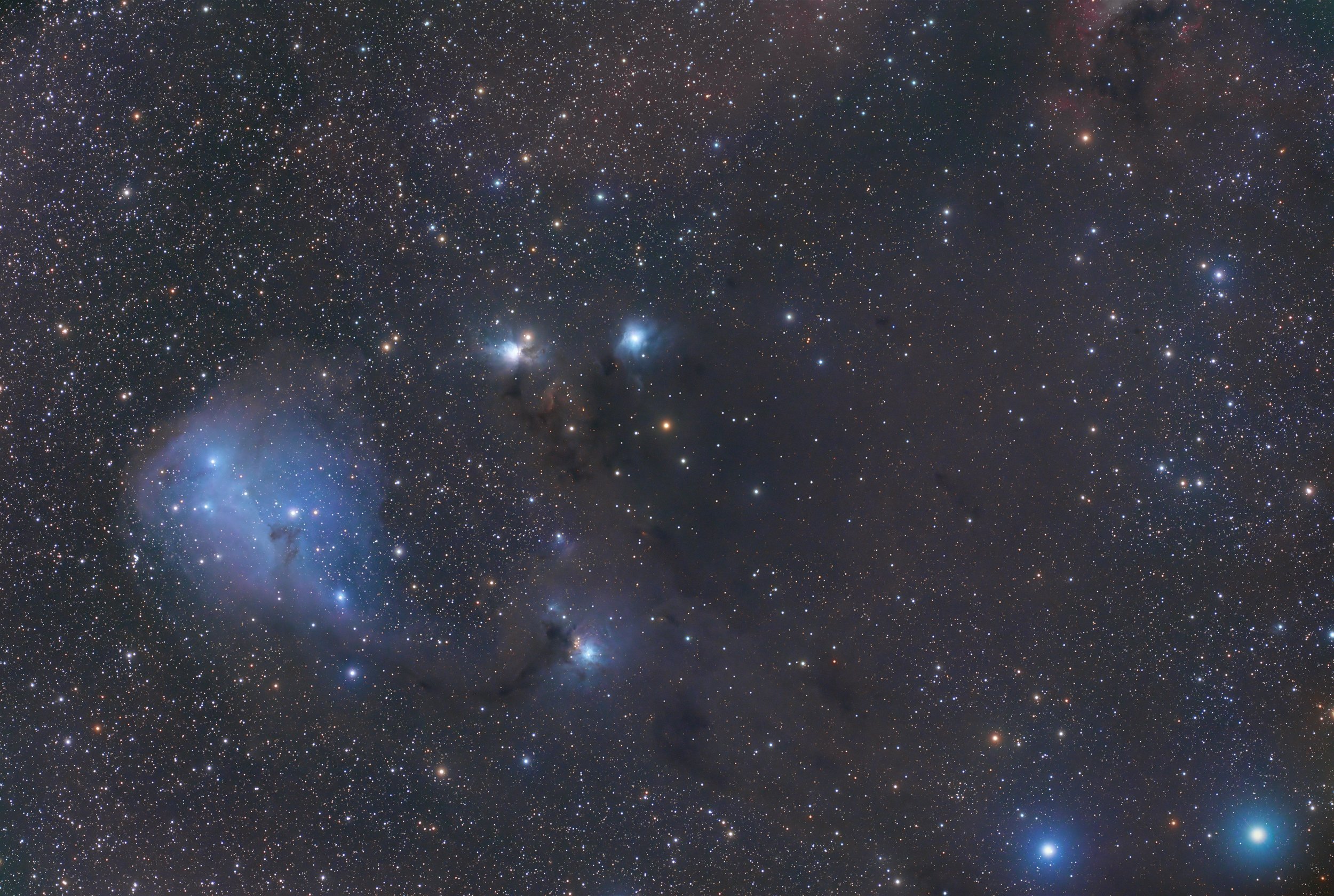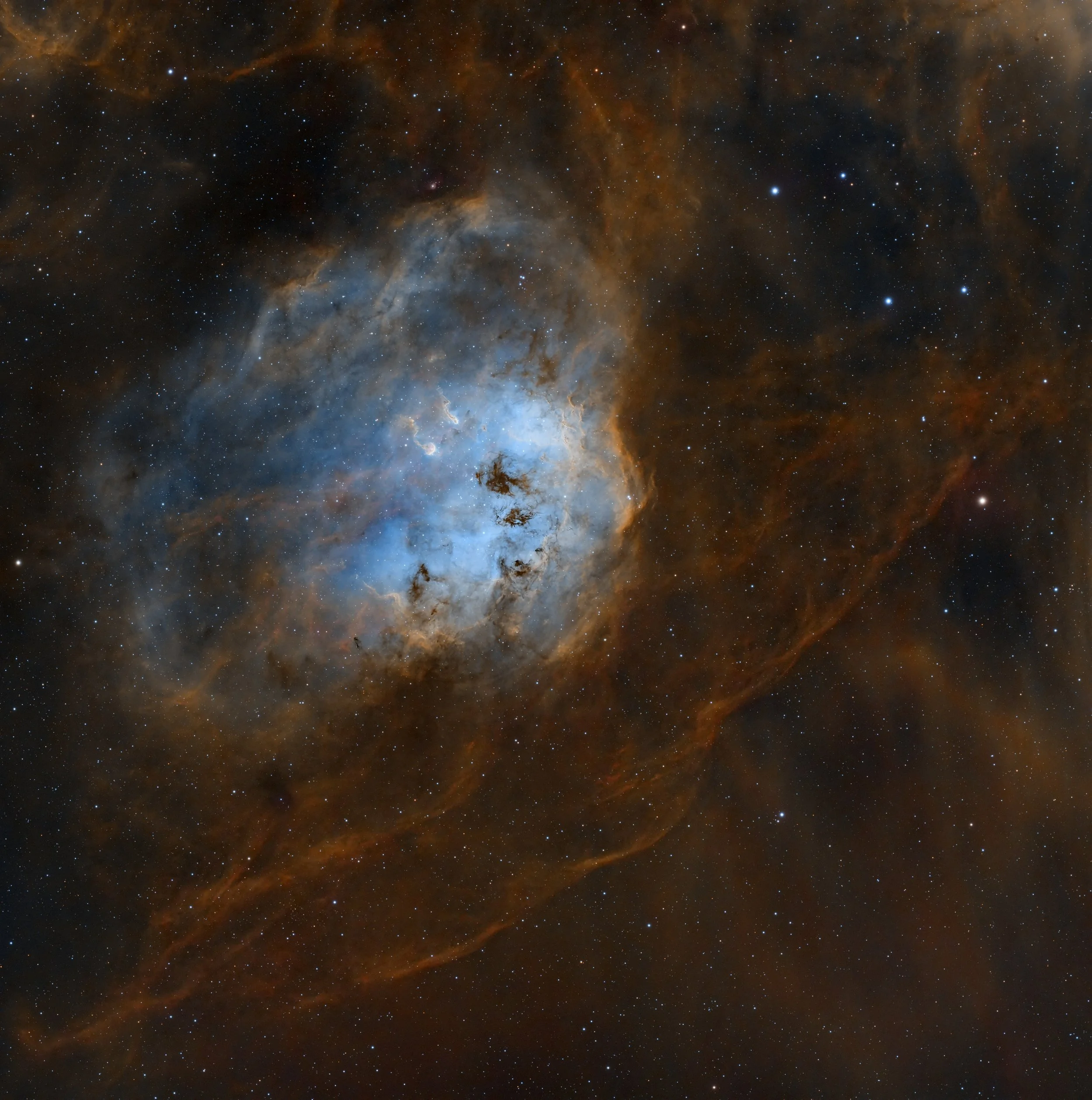
AAPOD2 Image Archives
The Tadpole Nebula
The Tadpole Nebula is a striking region of ionized hydrogen gas distinguished by its bright, compact “head” and an elongated, trailing “tail” of filamentary structures. This morphology, reminiscent of a tadpole, is sculpted by the dynamic interplay of stellar winds and ionizing radiation from nearby young stars, which compress and erode the ambient interstellar medium. Such processes not only reveal the intricate details of the nebula's structure but also provide valuable insights into the mechanisms of star formation and the evolution of molecular clouds.
Captured from Myślenice, Poland under Bortle 4 skies using a personal telescope setup, this SHO image was produced by carefully balancing multiple long exposures to preserve both the luminous core and the faint outer details. Through precise calibration and stacking of sub-exposures, the final composite reveals the nebula's full dynamic range, showcasing both the brilliant emission of the core and the subtle, diffuse glow of its trailing structures.
The Seven Sisters
Rising high on Christmas Day, the Pleiades star cluster (M45), known as the Seven Sisters, graces the heavens with a festive glow. In this image, the cluster is framed vertically, resembling a sparkling celestial Christmas tree. The bright blue stars, adorned with wisps of reflection nebulae, form a striking "ornamented" structure against the dark backdrop of space, as if dusted with cosmic snow.
This seasonal alignment invites us to look skyward and reflect on the beauty and wonder of the universe. Much like the spirit of the holidays, the Pleiades reminds us of connection and light, shining brightly as a timeless symbol of hope and renewal.
The California Nebula
The California Nebula, named for its resemblance to the shape of the U.S. state, is an iconic emission nebula located in the constellation Perseus, about 1,000 light-years away. Spanning nearly 100 light-years, this massive cloud of ionized hydrogen glows predominantly in deep red hues due to the influence of nearby star Xi Persei, an exceptionally hot and bright O-type star. The intense ultraviolet radiation from Xi Persei energizes the nebula's hydrogen gas, causing it to emit the characteristic red light of H-alpha.
This nebula is particularly intriguing because of its elongated structure and dynamic interplay of light and shadow, created by regions of interstellar dust that obscure parts of its glowing gas. It’s an active region of the sky, rich with complex textures and fine details that are brought to life in narrowband imaging, especially with H-alpha filters.
Astrophotographers and astronomers alike are drawn to the California Nebula for its striking appearance and its position within a star-rich field of the Milky Way. Although faint to the naked eye, it is a treasure for imaging enthusiasts who can reveal its full splendor under dark skies with long exposures.
A celestial homage to Earth’s own geography, the California Nebula is a timeless subject that captures the imagination and beauty of the universe.




